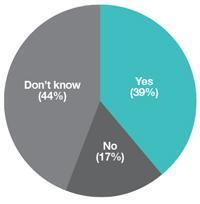Delving into the data to discover what QIS5 tells us
Testing the standard formula has been a big focus because it will be the main Europe-wide method for calculating insurers’ capital requirement for Solvency II.
UK insurers will need to know how the standard formula affects their solvency capital requirement (SCR) even if they plan to use an internal model, as the standard formula SCR may be used by the FSA as a benchmark against which to compare the internal model SCR.
Almost 70% of all European insurers and reinsurers that will be covered by Solvency II took part in the QIS5 quantitative impact study testing the standard formula. In the UK, 267 firms took part.
The standard formula tends to produce a higher capital requirement for insurers with longer-tail, more complex risks, whereas for a relatively simple motor book, for example, it will be less.
Partner at Deloitte, Rick Lester, said: “The problem with the standard formula is that it’s designed to fit a standard firm, which obviously doesn’t necessarily reflect the insurer’s profile.
“The standard formula might fit well for operational risk but because of an insurer’s portfolio, it might end up being penalised. In this case, the insurer would typically adopt an internal model – an approach to calculating capital requirements that fits their business.”
As part of QIS5, some firms were able to provide their internal model SCR as well as their standard formula SCR. For UK non-life firms, capital requirements under the internal model turned out to be 78% of what they would be under the standard formula.
Lester said Solvency II could have a knock-on effect on what business insurers write, depending on the capital required to be held against certain lines of business.
Lloyd’s urges no delay on SII
Lloyd’s wants the FSA to stick to its existing SII timetable, and not delay it by a year as has been suggested. Lloyd’s effort to win internal model approval has gained a momentum it hopes not to lose.
The company’s £3.1bn Central Fund, which collectively guarantees claims payouts for syndicate policyholders, means that Lloyd’s will be treated as a single entity by the FSA for Solvency II. For Lloyd’s to gain internal model approval, all syndicates must produce their own internal model and get it approved.
There is a deadline of 31 October 2011 for managing agents to submit their solvency capital requirement (SCR) to Lloyd’s. Those that fail to do so could face curtailments to their business plan, and/or capital loading.
The tough sanctions are a way to focus agents’ minds on the project. Internal model approval is seen as vital by Lloyd’s because the implications of the standard formula for its SCR are bad.
The differing risk profiles of each syndicate will produce different SCR outputs, all of which will then feed into the Lloyd’s overall model. Once Lloyd’s has reviewed the models it will determine the risk to the Central Fund, and develop its own Central Fund model. The Central Fund currently takes the syndicates’ capital requirements under ICAs and uplifts them by 35%. This is for legal purposes, to maintain its economic health, and to keep its top credit rating.
Last week, ratings agency AM Best reaffirmed its financial strength rating of ‘A’ and issuer credit rating of ‘A+’ for Lloyd’s, saying: “A smooth transition to the Solvency II regulatory regime in 2013, including the approval of a Solvency II compliant internal capital model, is crucial if Lloyd’s is to retain its unique capital efficiencies.”
To see the full article, click on the pdf link, right.
Downloads
IT_Knowledge_Numbers
PDF, Size 0.6 mb






































No comments yet